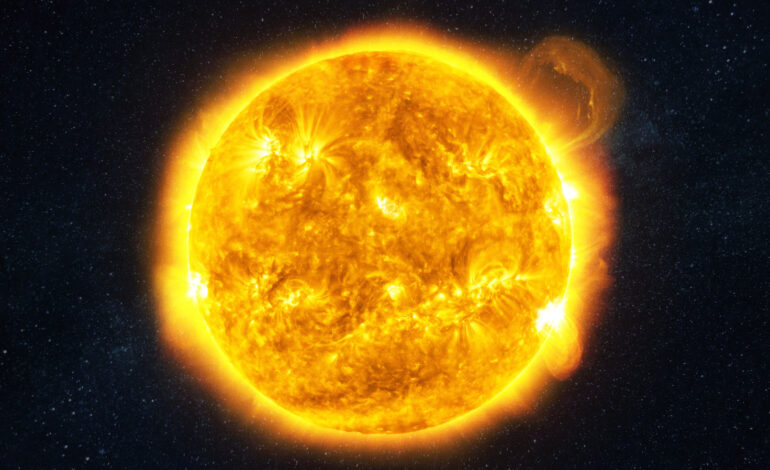Solar Storms Surge in 2025: What You Need to Know

In 2025, solar storms are expected to occur with greater frequency, raising concerns about their potential impacts on technology and daily life. Following a period known as the “deep solar minimum” that lasted from the 1980s until 2008, the sun has entered a phase of increased activity. Researchers at NASA’s Jet Propulsion Laboratory have observed a rise in plasma explosions and stronger magnetic fields, indicating more frequent occurrences of solar flares and coronal mass ejections.
Historical Context and Recent Trends
The deep solar minimum led many scientists to believe that the sun would remain relatively quiet for centuries. However, in 2008, solar activity surged unexpectedly, leading to heightened solar phenomena. In 2022, the sun produced its strongest solar storm in over two decades, causing beautiful auroras visible as far south as Mexico. While these natural light displays captivate observers, the underlying solar activity poses significant threats to modern technology.
Solar storms can disrupt power grids, GPS systems, and radio communications. The impacts of these disturbances are especially concerning given our reliance on technology in daily life. For example, NASA’s Artemis mission, which aims to return astronauts to the Moon and eventually send crews to Mars, faces challenges from these solar events.
The Impact on Technology and Daily Life
Solar storms occur when the sun’s magnetic field becomes unstable, resulting in explosive bursts of energy and radiation that can reach Earth within minutes. These bursts threaten satellites and ground-based technology, as they do not benefit from the protective barriers of the atmosphere. Historical incidents, such as the 1989 solar storm that caused a blackout in Quebec in under 90 seconds, highlight the potential risks.
Today, with an increasing number of satellites in orbit, the threat is even more pronounced. High-frequency radio signals crucial for aviation, shipping, and emergency communications are particularly vulnerable during solar events. For instance, the GPS systems used by aircraft and ride-sharing services can malfunction during intense solar activity, leading to significant disruptions.
Despite the dangers posed to technology, current research indicates minimal health risks from solar flares for individuals on Earth. Some studies have explored potential links between solar activity and health issues such as headaches and cardiovascular problems. However, evidence remains inconclusive, with most people likely to experience only signal interruptions or temporary power outages during solar storms.
While solar storms can cause traffic lights to malfunction or force airlines to reroute flights, they also bring an unexpected benefit: stunning auroras in locations far from the Arctic Circle. This phenomenon provides a unique opportunity for people around the world to witness the beauty of nature’s light show.
As our dependence on technology continues to grow, so does our vulnerability to solar activity. To mitigate potential disruptions, NASA is investing in projects like the Interstellar Mapping and Acceleration Probe (IMAP), aimed at improving forecasts for solar events. This initiative will enable better preparedness for future solar storms, ensuring that society can adapt to an increasingly dynamic solar environment.
In summary, while the prospect of more frequent solar storms in 2025 may seem daunting, the protective shield of Earth’s atmosphere largely safeguards individuals from harmful radiation. The primary concerns lie with technological disruptions that could test our patience during daily activities.






